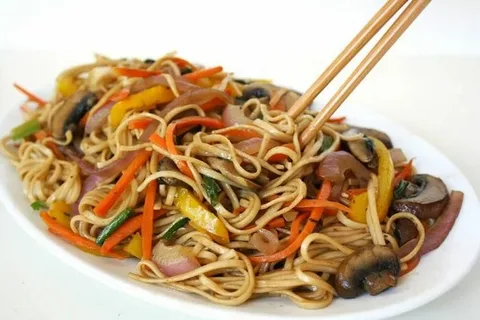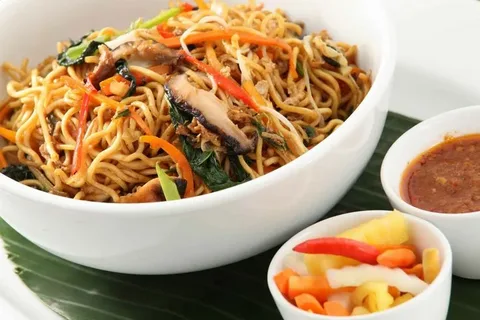Introduction
Chinese cuisine is one of the most beloved and diverse culinary traditions in the world. Known for its rich flavors, vibrant colors, and delicate balance of ingredients, Chinese food offers something for every palate. Whether you’re a fan of stir-fried dishes, steamed delicacies, or hearty soups, Chinese cooking is an art form that reflects the country’s history, culture, and love for food. In this article, we will explore the essential techniques, ingredients, and regional differences that make Chinese food cooking a unique and cherished culinary experience.

The Fundamentals of Chinese Cooking
Chinese cooking is built on a foundation of basic techniques that ensure the preservation of flavors, nutrients, and textures. Some of the most commonly used cooking methods include:
- Stir-frying: Perhaps the most iconic Chinese cooking technique, stir-frying involves cooking food quickly in a wok over high heat. A small amount of oil is used to sear meats, vegetables, and aromatics, preserving their freshness and flavor. This method is ideal for making dishes like kung pao chicken, chow mein, and stir-fried bok choy.
- Steaming: Steaming is a gentle and healthy way to cook food while retaining its natural nutrients and moisture. Steamed dishes like dumplings (such as xiao long bao or shumai) and fish are popular in Chinese cuisine. A bamboo steamer is often used for steaming, giving the food a subtle earthy fragrance.
- Deep-frying: Chinese deep-frying differs from Western methods in that it often uses a thin batter and high heat to quickly fry food, creating a crispy texture without absorbing too much oil. Classic examples include spring rolls, sweet and sour pork, and sesame balls.
- Boiling and poaching: These methods are used for making soups, broths, and delicate dishes like poached chicken. Chinese soups, such as wonton soup and hot and sour soup, are staples in many meals, known for their comforting and hearty qualities.
- Roasting: Roasting is particularly popular in Cantonese cuisine, with dishes like Peking duck and char siu (barbecue pork) being favorites. These meats are often marinated and slow-cooked to perfection, resulting in tender, flavorful dishes.
Essential Ingredients in Chinese Cooking
Chinese food cooking emphasizes the balance of flavors and textures, and the ingredients used are critical to achieving this. Here are some of the essential components found in most Chinese kitchens:
- Soy sauce: A cornerstone of Chinese cooking, soy sauce adds saltiness and umami depth to many dishes. There are two main types: light soy sauce, which is more delicate, and dark soy sauce, which has a richer, slightly sweet flavor.
- Rice: A staple in Chinese cuisine, rice is often served as a side dish or used in dishes like fried rice and congee. Jasmine rice is a popular choice for everyday meals, while sticky rice is used for dim sum or festive dishes like zongzi (rice dumplings).
- Noodles: Noodles are a versatile ingredient, ranging from wheat-based to rice-based varieties. Dishes like lo mein, dan dan noodles, and chow fun showcase the adaptability of noodles in soups, stir-fries, and sauces.
- Tofu: A plant-based protein, tofu is used in a wide range of dishes, from stir-fries to soups. It’s available in different textures, from soft to firm, and absorbs the flavors of the ingredients it’s cooked with.
- Ginger, garlic, and scallions: These aromatics are the holy trinity of Chinese cooking. They form the base for many stir-fries, marinades, and sauces, infusing the dishes with fresh, zesty flavors.
- Five-spice powder: This aromatic blend of spices includes star anise, cloves, cinnamon, Sichuan peppercorns, and fennel seeds. It’s commonly used in braised dishes and roasted meats, adding a warm, fragrant flavor.
- Oyster sauce: Made from oyster extract, this sauce adds a rich, savory flavor to dishes like stir-fried vegetables and meats. It’s often used as a finishing sauce to elevate the taste of the final dish.
- Sesame oil: A fragrant finishing oil, sesame oil is used sparingly to add a nutty, toasted flavor to dishes. It’s typically drizzled over cold salads or used in dipping sauces.

Regional Differences in Chinese Cuisine
China is a vast country, and its regional cuisines reflect the diverse geography, climate, and cultural influences. While there are many regional styles, the four most prominent are Cantonese, Sichuan, Shandong, and Jiangsu.
- Cantonese (Guangdong) cuisine: Known for its mild flavors and emphasis on fresh ingredients, Cantonese cuisine is home to famous dishes like dim sum, char siu, and steamed fish. The flavors are subtle, and the cooking methods, such as steaming and stir-frying, aim to highlight the natural taste of the ingredients.
- Sichuan cuisine: Sichuan food is famous for its bold, spicy flavors, particularly the use of Sichuan peppercorns, which create a unique numbing sensation. Dishes like mapo tofu, kung pao chicken, and hot pot are typical of this region, known for its liberal use of chili peppers, garlic, and fermented sauces.
- Shandong cuisine: Shandong cuisine is one of the oldest in China, focusing on simple, hearty dishes. It’s known for its emphasis on fresh seafood, clear broths, and robust flavors, such as those found in sweet and sour carp and baozi (steamed buns). Shandong chefs are also masters of knife skills, often showcasing intricate vegetable and meat cuts.
- Jiangsu cuisine: Jiangsu, also known as Huaiyang cuisine, is famous for its delicate flavors and beautifully presented dishes. The cooking style emphasizes precise techniques, and the food tends to be sweeter and less oily than other regions. Famous dishes include lion’s head meatballs and beggar’s chicken, where presentation is just as important as taste.
The Role of Balance in Chinese Cooking
One of the most critical aspects of Chinese food is the balance of flavors, textures, and colors. This balance is often achieved by combining five fundamental flavors: salty, sweet, sour, bitter, and umami. Each dish is carefully crafted to harmonize these tastes, creating a satisfying culinary experience.
In Chinese culture, food is also believed to have medicinal properties. The principles of Yin and Yang, which represent opposing but complementary forces, are applied to food. For example, cooling ingredients like cucumber and watermelon (Yin) are paired with warming ingredients like ginger and garlic (Yang) to maintain internal balance. This philosophy extends to meal planning, where a balance of textures (crunchy, soft), colors (green, red, yellow), and cooking methods (fried, steamed) is highly valued.
The Importance of Presentation and Sharing
In Chinese dining, presentation and communal eating are essential elements of the experience. Dishes are often beautifully arranged, with an emphasis on vibrant colors and artistic plating. It’s common to serve multiple dishes in the center of the table, allowing diners to sample various flavors and textures. Meals are seen as a time for sharing, fostering a sense of community and togetherness.

My personal experience Chinese Food Cooking
My experience with Chinese food cooking has been both a rewarding and eye-opening journey. Growing up, Chinese food was something I often enjoyed at restaurants, marveling at the complex flavors and vibrant presentation. But it wasn’t until I tried cooking it myself that I truly appreciated the artistry and precision behind each dish.
The first dish I attempted to make was a simple stir-fry with vegetables and chicken. I thought it would be easy, but I quickly learned how important technique is in Chinese cooking. Using a wok, controlling the heat, and ensuring that each ingredient was cut uniformly were all crucial steps. The high heat of the wok required me to move quickly, tossing the ingredients to ensure they cooked evenly without burning. Despite some initial mistakes, the result was delicious, and it encouraged me to continue experimenting.
As I delved deeper into Chinese cooking, I started making more challenging dishes, like dumplings and wonton soup. Making the dough and filling from scratch was a labor of love, but the process taught me the value of patience and precision. I also learned how to balance flavors, combining sweet, salty, and savory elements to create that signature harmony in each dish.
One of the most enjoyable aspects of learning to cook Chinese food has been discovering the diversity of ingredients. Tofu, soy sauce, oyster sauce, Sichuan peppercorns, and fresh aromatics like ginger and garlic have become staples in my kitchen. Each ingredient brings something unique to the table, and learning how to use them has expanded my cooking repertoire.
Over time, I’ve also embraced the communal aspect of Chinese dining. Sharing meals with family and friends, serving multiple dishes for everyone to try, and enjoying the experience together has made my cooking even more fulfilling. Whether it’s a simple stir-fry or a more elaborate feast, cooking Chinese food has become a way for me to connect with others through food.
In the end, Chinese food cooking has taught me to appreciate the delicate balance of flavors, the importance of preparation, and the joy of sharing food with loved ones. It’s a culinary tradition that I’ve grown to love, and it has inspired me to continue exploring new techniques and dishes in the kitchen.
Conclusion
Chinese food cooking is a rich, complex art that blends tradition, culture, and innovation. With its wide variety of techniques, ingredients, and regional influences, it offers endless possibilities for creating delicious, balanced, and visually stunning dishes. Whether you’re an experienced cook or a beginner in the kitchen, exploring Chinese cuisine is a rewarding journey through flavors and culinary craftsmanship that will undoubtedly leave a lasting impression.